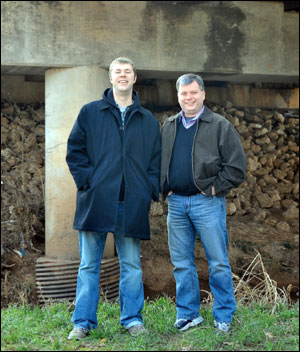Feb 01, 2010Back in 2003, the U.S. Department of Defense (DOD) issued a request for proposal for sensors that could detect corrosion in aircraft metal. Oklahoma State University's Intellectual Property Office contacted two faculty members with relevant experience: Allen Apblett, an associate professor of inorganic chemistry, and Nicholas Materer, an associate professor of chemistry. "Dr. Apblett did a lot of work on corrosion inhibitors," says Materer, "and I've done work with RFID. We realized we could marry these two things to create a sensor that could detect and report the location of corrosion." Later, Tyler Ley, a civil engineer and assistant professor, joined the team.
The researchers developed a sensor using an Atmel low-frequency RFID transponder. Initial versions used the metal on which corrosion was to be detected to connect the RFID chip to the antenna. If the connection eroded, the RFID transponder would stop working, indicating a potential problem.
While the approach was simple, it had two drawbacks: It wasn't clear if the tag stopped operating because of corrosion or a problem with the transponder; and it was difficult to control the sensor's sensitivity. "The amount of corrosion that would cause the chip to stop functioning might not be significant enough to affect a bridge or road," says Materer. "You don't want the sensor to be too sensitive because there is corrosion going on all the time."
The researchers have developed a next-generation sensor in which corrosion would eat away at a circuit. When the circuit is broken, that information is transferred to the RFID chip and the information is communicated to the reader the next time the tag is read. They still need to determine a way to correlate the sensor's sensitivity to the level of corrosion in the structure.
The team plans to work with the Texas Department of Transportation to test the system this year. The aim is to monitor the corrosion of rebar—a steel rod used in reinforced concrete—in a highway, because when the rebar corrodes, there's significant cracking in the concrete. "If we can know that the concentration of corrosive agents close to the rebar excite a threshold, the authorities can take preventative measures," says Materer. "For instance, you can put less salt down to reduce the chemicals corroding the rebar, or put down a protective layer on the road surface."
The university set up a company called SensorCorr to commercialize the technology, and partnered with AGC Aerospace & Defense to bring it to market. Materer says if the first test goes well, the company could have a sensor on the market within a year.
Ironically, SensorCorr hasn't had much success in the aerospace sector, because regulations surrounding the use of radio devices on airplanes made developing and testing a sensor for the original application too difficult. But oil companies are interested in the corrosion sensor and hope they can use the same RFID tag to track pipe inventories and monitor corrosion. If the oil industry adopts the corrosion sensor, the researchers will have hit pay dirt.

